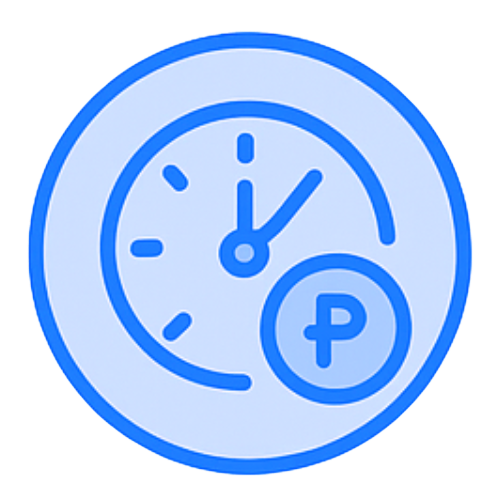For small and medium-sized enterprises (SMEs), access to financing can be the difference between staying afloat and scaling up. Whether it's for managing cash flow, purchasing inventory, or expanding operations, business loans offer essential support, but only if you fully understand their long-term cost.
It’s not just about how much you borrow or your monthly payment. Interest calculation methods, loan terms, fees, and hidden charges can all impact the actual amount you repay.
That’s where a small business loan and interest rate calculator becomes a valuable tool. It helps you estimate your monthly payments, compare different loan options, and make smarter borrowing decisions, before you commit.
In this guide, you’ll learn how to use a loan calculator effectively, understand how interest is computed, identify what affects your repayments, and avoid common mistakes when applying for a business loan.
What is a Small Business Loan Calculator?
A small business loan calculator is a tool that helps SME entrepreneurs like you estimate how much you will need to repay a loan. It calculates the monthly payments, total interest, and overall repayment amount based on key inputs.
- Loan Amount: The total money your business plans to borrow.
- Interest Rate (Annual Percentage Rate or APR): The yearly cost of the loan expressed as a percentage. This affects how much interest you will pay over time.
- Loan Term: The length of time it will take to repay the loan. This can be in months or years and influences the size of each payment.
- Repayment Frequency: How often you make payments. Standard options are monthly or quarterly.
- Optional: Some calculators let you add processing fees, origination charges, or factor in early repayments. This gives a more accurate view of the total loan cost.
After entering the right inputs, you can use the calculator to get a clearer picture of your loan’s cost and repayment schedule, helping you make smarter borrowing decisions.
Benefits of Using a Small Business Loan Calculator
A loan can be a big decision for any business owner. Knowing how much you will pay monthly and the total loan cost helps you plan better and avoid surprises. Here are the key benefits it offers.
- Helps You Plan Your Budget: The calculator shows your monthly loan payments, helping you see if the loan fits your business cash flow. This makes budgeting more accurate and prevents overextending your finances.
- Easy Comparison Between Loan Offers: You can quickly compare different loan amounts, interest rates, and repayment terms from banks or lenders like n90 to find the best option. This helps you choose the most affordable loan.
- Saves Time and Effort: Instead of doing complex calculations, the tool gives you instant and accurate monthly payment estimates. This allows you to focus on managing your business instead of crunching numbers.
- Determines Loan Affordability: Use the calculator to check if your business income can cover the loan payments without straining your operations. This helps avoid taking on debt that could cause cash flow problems.
- Understands Total Loan Cost: The small business loan calculator breaks down the total amount you’ll pay, including interest, so you know the full cost upfront. This prevents surprises and helps with better financial planning.
- Reduces Financial Stress: Seeing clear payment amounts removes the guesswork and lets you make informed borrowing decisions. This builds confidence and improves money management.
- Helps You Prepare for Emergencies: Knowing your monthly payments allows you to set aside funds for unexpected expenses. Some calculators also show how changing the loan term can lower payments during difficult periods.
Using a small business loan and interest rate calculator gives you greater control over your borrowing decisions and helps you manage your finances wisely. To make informed choices, it’s essential to understand how lenders calculate interest on your loan.
Also Read: Applying for a Small Business Loan: 5 Steps to Get Approved
Understanding Loan Interest Computation Methods
Many small business owners in the Philippines face challenges when repaying loans because they don’t fully understand how interest is calculated. This lack of clarity can lead to unexpected high payments or extended repayment periods.
Knowing lenders' standard interest computation methods will help you avoid these surprises and manage your loan more effectively. Here are the standard methods you should be familiar with.
1. Add-On Interest Method
In the add-on interest method, lenders calculate the total interest based on the original loan amount and apply it for the entire loan term, regardless of how much principal you've already repaid. This total interest is then added to the principal, and the combined amount is split into equal monthly payments.
This method is commonly used by non-bank lenders and often appears straightforward, but it can significantly increase your true borrowing cost.
Example:
You borrow ₱100,000 at 12% flat annual interest for 12 months.
- Total interest = ₱100,000 × 12% = ₱12,000
- Total repayment amount = ₱100,000 + ₱12,000 = ₱112,000
- Monthly payment = ₱112,000 ÷ 12 = ₱9,333.33
Even though you're repaying part of the principal each month, you're still paying interest as if you owed the full ₱100,000 throughout the loan period. This means the effective interest rate (EIR) is actually much higher than 12%.
Takeaway: While the monthly payments are fixed, the add-on method doesn't reduce interest over time, making it costlier than other methods like the diminishing balance approach.
2. Diminishing Balance Method
In the diminishing balance method (also known as reducing balance), interest is calculated only on the outstanding loan balance, not the original principal. As you repay more of the principal each month, the amount of interest charged gradually decreases.
While your total monthly payment may remain the same in an amortized schedule, a larger portion goes toward the principal over time, reducing your interest cost in the long run.
Key Characteristics:
- Monthly interest = Outstanding balance × Interest rate
- As the balance reduces, interest costs drop, and more of each payment goes toward the loan principal
- Total interest paid over the term is lower than in the add-on method
This method is commonly used by Philippine banks and government loan programs and is generally more cost-effective for borrowers.
Takeaway: The diminishing balance method results in lower total interest and is a fairer, more transparent way to calculate loan payments, especially for long-term or large business loans.
3. Flat Rate Method
In the flat rate method, interest is calculated on the entire original loan amount, and this interest remains constant throughout the loan term, regardless of how much principal you've already repaid. This leads to equal monthly payments, but similar to the add-on method, the actual cost of borrowing is higher than it appears.
This method is less commonly used by major banks in the Philippines but may still appear in informal lending arrangements or some retail financing programs.
Example:
If you borrow ₱100,000 at a 12% flat rate for 12 months:
- The interest is ₱12,000 (₱100,000 × 12%)
- The total repayment amount becomes ₱112,000
- You pay ₱9,333.33 monthly, same as with add-on interest
Takeaway: Flat-rate loans can seem simple, but often cost more. It’s essential to ask lenders whether the rate offered is flat or computed based on a reducing balance.
Understanding these methods helps you compare loan offers more effectively and choose the one that aligns best with your business cash flow. Don’t worry if the calculations seem overwhelming—tools like the Bangko Sentral ng Pilipinas (BSP) loan calculator can do the heavy lifting.
While the interest computation method significantly determines loan costs, it’s not the only factor to consider. Several other elements also influence your monthly repayment amount. Understanding these can help you better anticipate costs and control your financial obligations.
Factors that Affect Loan Payments
Your monthly payments can still vary even with the same loan amount and interest rate. That’s because lenders consider a few other details when computing your dues. Here are the key factors that influence how much you’ll pay.
- Loan Amount and Term: The size of your loan and how long you take to repay it affect your monthly payments. Larger loans or longer terms usually mean higher total interest, but spreading payments over time can lower monthly dues.
- Interest Computation Method: Different lenders use different ways to calculate interest, such as add-on, diminishing balance, or flat rate methods. Each affects the amount of interest you pay and your monthly installment.
- Applicable Fees: Some loans include extra costs like processing fees, insurance, or other charges. These fees increase the overall amount you repay and may affect your monthly payment.
- Late Payments and Penalties: Paying late can result in penalties or increased interest, which raises your loan cost. It’s important to stay on schedule to avoid these extra charges.
Knowing what shapes your loan payments helps you stay in control. But even with the right information, it’s easy to slip up. Hence, it's crucial to watch out for common mistakes that could cost you more than expected.
Also Read: Understanding Cash Flow Loans for Your Small Business in The Philippines
Common Mistakes to Avoid When Taking a Small Business Loan
Many business owners focus only on the monthly payment, assuming it’s the most important number. While that’s a key factor, overlooking other details, like how interest is calculated, hidden fees, or early repayment terms, can lead to higher costs or repayment issues later on.
Understanding these common pitfalls enables you to make smarter loan decisions, protect your business’s financial health, and avoid unexpected costs throughout your loan term. Here are the most common mistakes to watch out for:
Focusing Only on Monthly Payments
Don’t just look at the monthly dues. A loan with lower monthly dues may have a longer term or higher interest, which means you pay more overall. Review the total loan cost, not just the monthly figure, to understand the real expense.
Not Clarifying the Interest Method
Lenders in the Philippines use different ways to calculate interest, such as add-ons, diminishing balances, or flat rates. These methods can result in very different payment amounts. If you don’t clarify this upfront, you might be surprised by how much interest you pay.
Overlooking Hidden Fees
Loans often include other charges, such as processing fees, insurance, documentary stamp tax, and interest. These can increase the total payable amount. Ask for a breakdown of all costs before agreeing to a loan.
Assuming Zero Interest Means No Cost
Some lenders offer zero-interest loans as a promotion, but these often come with tight repayment terms or additional fees. Others might include the interest cost in the product price or the loan amount. Always read the terms carefully and ask questions if something isn’t clear.
Not Asking About Early Repayment Terms
Paying off your loan early can save you money, but only if no penalties exist. Some lenders charge a fee for early repayment, while others don’t allow it at all. Confirm these details in advance, especially if you think your cash flow will improve and you’d like to clear the loan sooner.
To avoid these common missteps, you must partner with a lender that prioritizes clarity, trust, and alignment with your business goals. n90 offers transparent terms and tailored support to help SMEs make informed financing decisions with confidence.
How n90 Helps Small Businesses?
As an SME owner, we know how risky it can be to take out a loan without full clarity. That’s why at n90, we focus on making business financing simple, honest, and easy to manage. We offer Small Business Loans, Bridge Loans, and Invoice Financing, all built to match your business’s size and cash flow.
Here’s why SMEs choose us:
- No Hidden Fees: We clearly show all charges - processing, insurance, and other applicable fees, before you sign anything. That way, you can confidently plan your payments and avoid last-minute surprises.
- Transparent Interest Rates: Our interest rates are linked to your verified annual revenue. You’ll always know exactly what rate applies to your business:
- Less than 1% monthly for revenues over ₱150M
- 1.09%–1.49% for revenues between ₱15M–₱150M
- 1.50%–1.90% for revenues under ₱15M
- Clear Loan Limits: We approve loan amounts based on your actual income, not inflated projections, so you never borrow more than you can comfortably repay:
- Up to ₱25M for revenues above ₱150M
- ₱1M–₱10M for revenues between ₱15M–₱150M
- Up to ₱1.5M for revenues below ₱15M
- No “Zero-Interest” Gimmicks: We don’t use misleading 0% offers with hidden costs or restrictive terms. We aim to give you full visibility and honest terms from day one.
When you borrow from us, you’re not just getting funds, you’re getting a financing partner that wants your business to grow sustainably.
Final Note!
Taking out a small business loan isn’t just about covering immediate expenses; it’s about making a smart decision that supports your business long-term. Loan calculators can help you estimate the cost, but real clarity comes from working with a lender who’s transparent, supportive, and aligned with your goals.
At n90, we offer more than just capital; we offer guidance, flexibility, and financing solutions built specifically for SMEs in the Philippines. With no hidden fees, clear interest terms, and personalized support, we help you borrow confidently and focus on what matters most: growing your business..
Start your application today or connect with an n90 advisor at +63 962 663 1393 to explore the best financing options tailored to your business goals.
FAQs
1. Can I refinance my small business loan to get better terms?
A: Refinancing allows you to replace your existing loan with a new one, often with a lower interest rate or longer repayment term. This can help reduce monthly payments or overall costs, but may also involve fees or affect your credit standing.
2. How does my credit score impact my loan eligibility and interest rate?
A: Lenders often assess your credit score to determine your risk as a borrower. A higher credit score can qualify you for better interest rates and loan terms, while a lower score might lead to higher costs or loan denial.
3. What documents must I prepare when applying for a small business loan?
A: Typical documents include financial statements, tax returns, business permits, bank statements, and a business plan. Having these ready can speed up the application process and improve your chances of approval.













